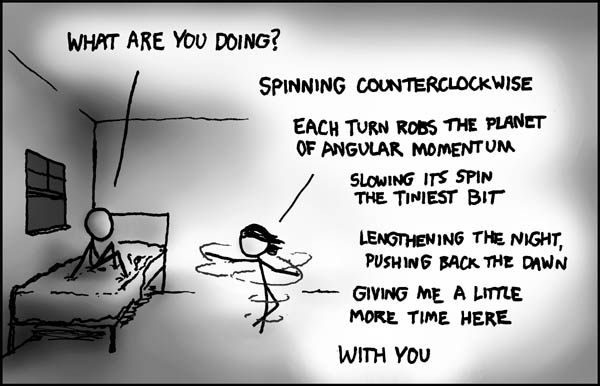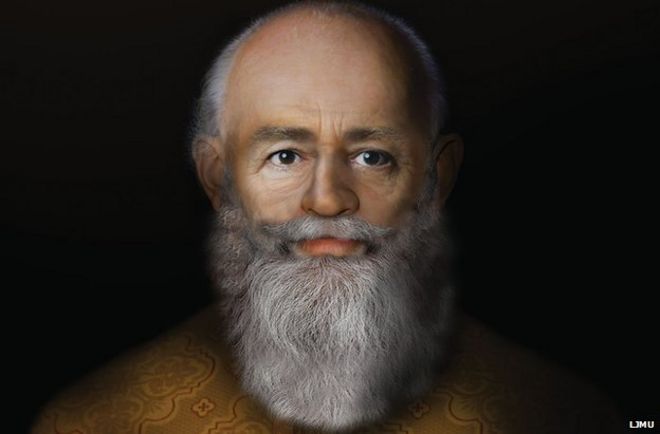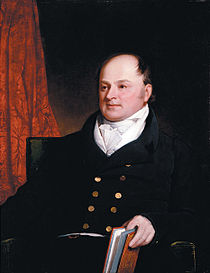 |
| Screenshot of the UTC clock from www.time.gov during the leap second on December 31, 2016. |
Every now and then a leap second is added to Coordinated Universal Time (UTC) in order to synchronize clocks worldwide with the Earth's ever slowing rotation.
Atomic Time vs. Universal Time - two components are used to determine Coordinated Universal Time (UTC):
International Atomic Time (TAI): A time scale that combines the output of some 200 highly precise atomic clocks worldwide, and provides the exact speed for our clocks to tick.
Universal Time (UT1), also known as Astronomical Time, refers to the Earth's rotation around its own axis, which determines the length of a day.
Half a billion years ago (when the Earth was 4 billion years old, instead of 4.5), each day was 22 hours long instead of 24. The day has gotten longer because of tidal forces from the Moon.
Loosely speaking, here’s how tidal drag works: The Moon’s tides raise bulges in the Earth, but the Earth’s rotation moves those bulges out of line with the Moon. The Moon’s gravity tries to tug the bulges back into line, which exerts a twisting force on the Earth, slowing it down.
Strangely, the Earth is actually not slowing down as much as you’d expect from tidal drag. The biggest reason for the discrepancy is that during the last ice age, the continents were pushed down by the weight of the glaciers, and they’re still springing back into place. This has the effect of shifting mass toward the poles, closer to the axis of rotation:
At the moment, each day is about 0.8 milliseconds longer than the 86,400 seconds it needs to be to avoid adding leap seconds.
This difference fluctuates over time based on weather and other effects (it’s actually shortened a bit since the early 1990s), although in the long run, it will definitely get larger as the Earth slows.
If we wanted to get rid of leap seconds, we’d need to keep the Earth spinning at a more constant rate. This means speeding up the Earth and shortening each day by about 0.8 milliseconds.This is a tough problem. Here are a few things that won’t work:Spinning counterclockwise in a chair. It temporarily alters the Earth’s rate of rotation, but not enough to matter.Putting rocket engines on the Equator. This won’t work because the exhaust would go into the atmosphere, which transmits the force back to the ground as wind drag—it’d be like making a bike go forward by pushing on the handlebars. If the engines were somehow mounted above the atmosphere, they’d be able to slow the Earth, but not by enough to accomplish our goal.Triggering big earthquakes. This can alter the length of the day, but even those aren’t big enough to make a difference.In the end, there’s only one solution: Hitting the Earth with asteroids.
More science, from TimeandDate.com:
A normal day has 86,400 seconds, but in the atomic time scale 1 second is not defined as one 86,400th of the time it takes Earth to rotate around its axis but rather as the time it takes a Cesium-133 atom at the ground state to oscillate precisely 9,192,631,770 times.The advantage of this definition is that it is extremely precise: atomic clocks deviate only 1 second in up to 100 million years. On the other hand, the Earth's rotation, which is expressed by the time standard UT1, is far less reliable. It slows down over time, which means that days get longer. On average, an Earth day is about 0.002 seconds longer than the daily sum of the 86,400 seconds measured by the atomic clocks. This makes for a discrepancy between TAI and UT1 of around 1 second every 1.5 years.
Leap seconds are added to our clocks (UTC) so this discrepancy does not get too large over time and the time we use is synchronized as much as possible with the Earth's rotation.
When the difference between UTC and UT1 approaches 0.9 seconds, a leap second is added to UTC and to clocks worldwide. By adding an additional second to the time count, our clocks are effectively stopped for that second to give Earth the opportunity to catch up with atomic time.
More at TimeandDate and WhatIf.






%20(1).png)









































